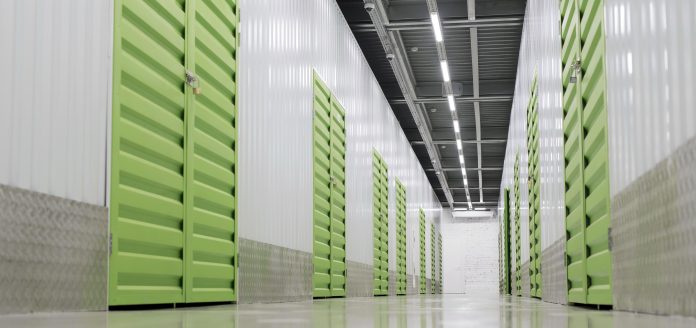Utilising the services of a trusted external self-storage facility in Sydney can make life transitions, such as moving to a new house, decluttering, or managing a growing business inventory, effortless. You can choose an indoor or outdoor storage unit based on your storage requirements, how often you’ll need access, and your budget.
Outdoor Storage
Outdoor storage units offer the convenience of driving up to the units, making them popular among users. Positioned at ground level, these units allow you to park right at the door, so loading and unloading heavy items can be done easily. If you’re managing a household move or regularly transporting boxes and equipment, this type of setup can save time and reduce physical strain.
This setup is often ideal for those using self-storage in Sydney for items like outdoor gear or business tools. With no need to navigate hallways or lifts, outdoor units suit straightforward, high-volume access.
Cost Benefits of Outdoor Units
Outdoor storage generally costs less because the units don’t come with climate control or other added features. If you’re storing belongings that won’t be affected by weather fluctuations, this lower price can be appealing.
Those keeping items like spare tyres, plastic furniture, or garage tools often find that outdoor units offer the best value, as they are cost-effective for short-term or non-sensitive storage requirements.
Ideal for Storing Larger Items
Outdoor storage units are often built to accommodate larger belongings—things like bikes, surfboards, heavy-duty tools, or even small trailers. Outdoor spaces have wider access points, so it’s a breeze to load and unload belongings that may be difficult to handle through standard doors.
If you need furniture self-storage, these units are excellent. You can store heavy furniture pieces like lounges, mattresses, or large dining tables comfortably.
Limitations of Outdoor Storage
Although cost-effective, outdoor storage has its limitations. Outdoor units are exposed to weather changes. Without climate control, items can be affected by extreme temperatures or humidity. That means it is not suitable for storing electronics, photos, or paper documents.
Security Considerations for Outdoor Units
Outdoor units, even at secure facilities, are generally more open to potential break-ins. While many sites have locked gates, cameras, and lighting, the drive-up layout means individual units may still be more accessible to intruders. Always ask about the security systems in place before storing your belongings.
Pest Risks with Outdoor Storage
Outdoor units remain exposed to atmospheric elements and are more susceptible to pests, including rodents and insects. Even well-sealed spaces may encounter occasional issues, depending on their surroundings. If you’re storing wooden furniture, you’ll need to be cautious. Reputable self-storage facilities implement pest control, but it’s still wise to pack smart. You can use sealed plastic bins or wrap items in protective materials to safeguard your belongings.
Indoor Storage Units
Indoor storage units are housed within secured buildings that often feature climate control—ideal for belongings that don’t cope well with extreme temperatures or humidity.
If you’re renting small storage units to store items like photographs, electronics, or musical instruments, indoor units help protect them from damage caused by temperature fluctuations or excess moisture.
Stronger Security for Indoors Units
Indoor facilities often utilise digital access systems, such as keypads or swipe cards. Some also have staff on-site or security personnel monitoring entrances. As these units are inside lock and key, the chances of theft or damage are significantly reduced. When storing high-value goods, the added protection indoor units provide can justify the higher price.
Indoor Units Provide Pest Protection
Indoor storage units are resistant to pests. With secure building covers and regular maintenance, these units naturally limit entry points for insects and rodents. If you’re storing clothing, books, or upholstered furniture, this type of setup provides added peace of mind. Even so, it’s a good idea to seal items properly for long-term storage.
Drawbacks of Indoor Storage
The biggest downside of indoor units is cost. The higher level of protection, climate control, and monitored access adds to the price. For those who don’t require those features, this can be a costly solution.
These units also may have limited hours of access. You may need to plan or work within restricted timeframes to retrieve your belongings.
Access Limitations to Consider
Unlike drive-up units, indoor storage often means navigating corridors, lifts, or stairs. It isn’t always ideal if you frequently move large or heavy objects. The extra effort required to transport goods from the car to your unit may not be suitable in every situation.
Check if trolleys are provided or if there’s ground-floor access available. Some modern buildings do offer loading bays and wide corridors to reduce the strain on the building.
Selecting the Right Storage for Your Needs
The type of unit you plan to store will have the most significant impact on which type is right for you. Durable outdoor gear, sports equipment, or tools are suitable for storing in an outdoor unit. On the other hand, items such as keepsakes, heirlooms, or anything that can degrade easily will be safer in indoor units.
The frequency of access also matters. Daily or weekly visits may be easier with an outdoor unit, but long-term secure storage might demand the security offered by indoor units.
Final Words
Whether you’re in the middle of a move, downsizing, or just decluttering, there’s a storage option to suit your situation. Outdoor storage gives you quicker access and can save money, while indoor units provide extra protection for fragile or sensitive items. If you only need to store a few things, small storage units may be all you need—compact, secure, and cost-efficient.


